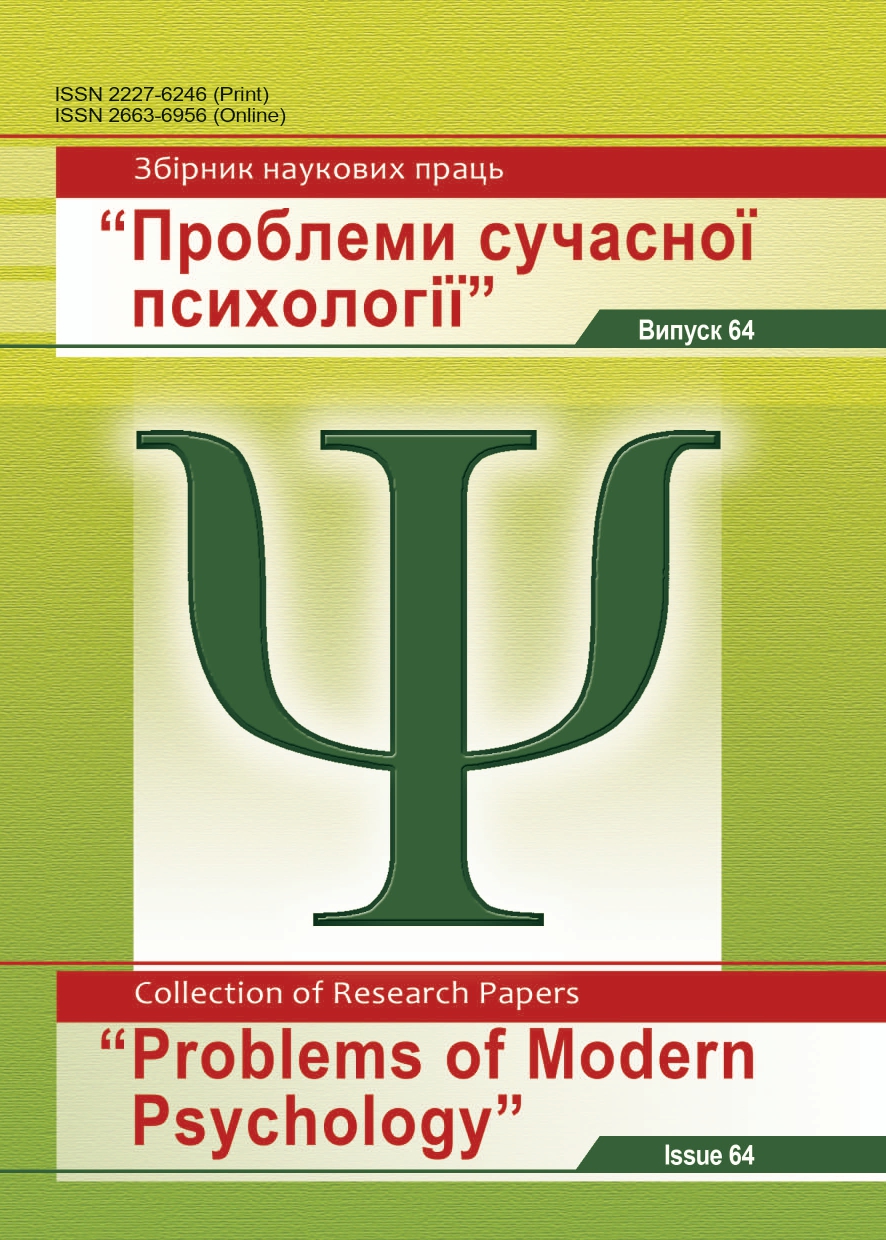Dominant Functions of Social Intelligence of Teachers of Preschool Educational Establishments in the Conditions of War in Ukraine
DOI:
https://doi.org/10.32626/2227-6246.2024-64.29-47Keywords:
intelligence, social intelligence, cognitive competence, adaptation to life situations, understanding the actions of other people and influencing them, the ability to express spontaneous judgments about other people, to predict the behavior of othersAbstract
The purpose of our article is to analyze dominant functions of social intelligence of the teachers of preschool educational establishments in the conditions of war in Ukraine.
Methods of the research. The following theoretical methods of the research were used to solve the tasks formulated in the article: a categorical method, structural and functional methods, the methods of the analysis, systematization, modeling, generalization. In our research we also used empirical methods, such as the statement study.
The results of the research. The functions of “understanding the actions of other people and influencing them”, “understanding oneself and modeling behavior in accordance with the person’s needs, his/her goals and abilities” are distinguished by us. We consider the level of the development of the specified characteristics of these functions to be indicators of the development of these functions. So, as a result, we distinguish between interpersonal and personal intelligence.
Conclusions. We consider the dominant functions of social intelligence to be “the ability to express spontaneous judgments about other people” and “to predict the behavior of others”. These functions are noted to actualize the so-called “social gift”, that is the ability to adequately express oneself about the surrounding subjects of people. The function of “adaptation to life situations” is also distinguished by us. This function is noted to significantly affect the development of general abilities and personal qualities, facilitates the formation of cognitive competence, which allows people to perceive the events of social life with a minimum of surprises and with maximum of personal benefit. The functions of “solving practical tasks and situations of everyday life” and “social adaptation” are also highlighted. This function actualizes a high level of the individual’s ability to solve daily tasks, including complex situations and situations of cognitive dissonance.
Downloads
Published
How to Cite
Issue
Section
License
Copyright (c) 2024 Ivashkevych Eduard, Kurytsia Denys

This work is licensed under a Creative Commons Attribution-NonCommercial 4.0 International License.
Copyright
The Editorial Board has the full right to publish original scientific papers containing results of theoretical and experimental research works which are not currently subject to review for publication in other scientific editions. The Author shall transfer to the editorial board of the Collection the right to spread the electronic version of the paper, as well as the electronic version of the paper translated into English (for papers originally submitted in Ukrainian and Russian) by all kinds of electronic means (placement at the official website of the Collection, electronic databases, repositories etc).
The Author of an article reserves the right to use materials of the paper, without approval with the editorial board and the founders of this Collection: a) partially or fully, for educational purposes; b) for writing own dissertation papers; c) for preparation of abstracts, conference reports and presentations.
The Author of an article can place electronic copies of the paper (including the final electronic version downloaded from the official website of the Collection) at:
- personal web resources of all Authors (websites, webpages, blogs etc.);
- web resources of the institutions where the Authors are employed (including electronic institutional repositories);
- non-profit public access web resources (for example, arXiv.org).
But in all cases, it is obligatory to have a bibliographic reference to the paper, or a hyperlink to its electronic copy placed at the official website of this Collection.







